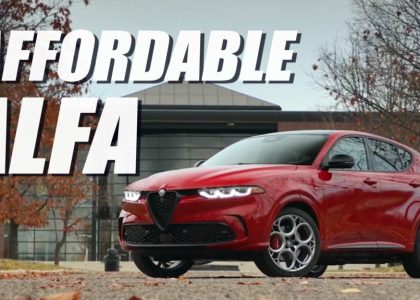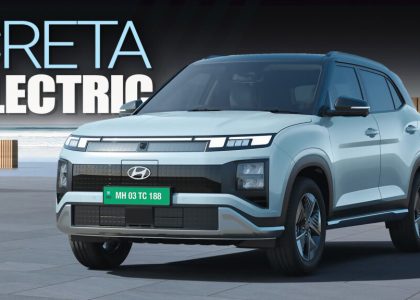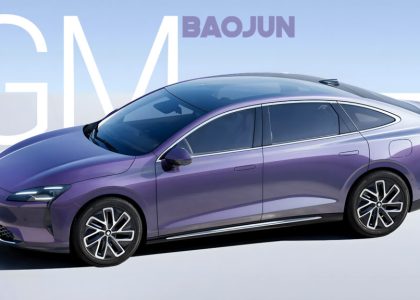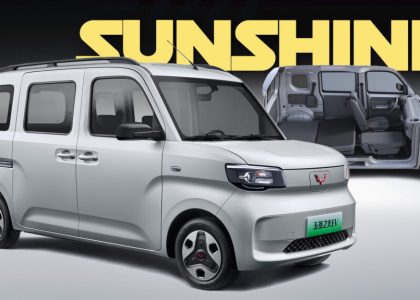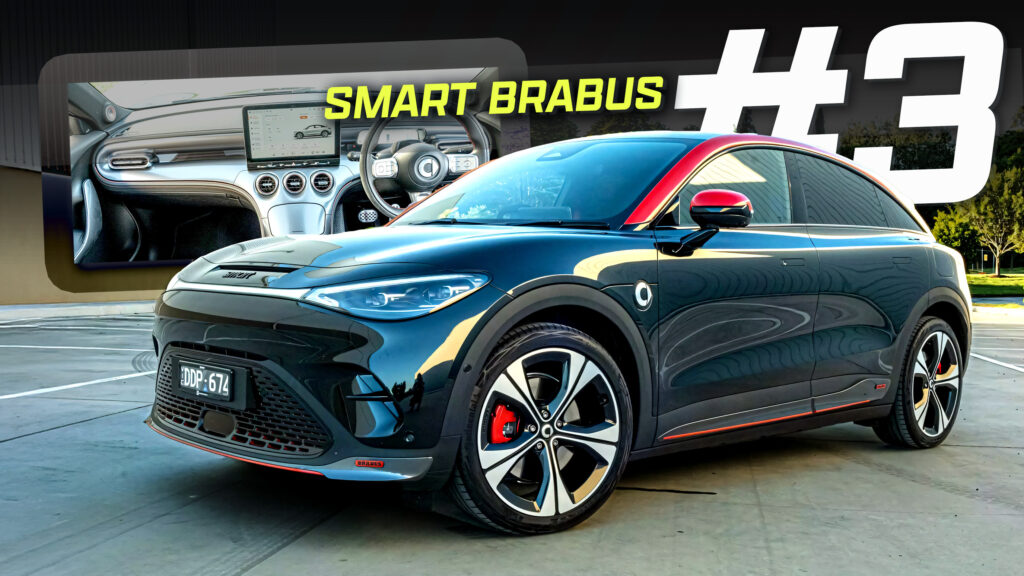
While Brabus is best known as a premier aftermarket Mercedes-Benz tuner, it has also maintained a 50:50 joint venture with Daimler since 2001, channeling its expertise into customizing models from the Smart family. Brabus, the same brand responsible for turning AMG monsters into even bigger monsters, has now turned its attention to the Smart #3 that benefits from a raft of modifications.
It goes squarely against the class-leading Tesla Model Y Performance, but also rivals slightly more premium offerings like the BMW iX3 and Genesis GV60 Performance. It’s just landed in Australia and is being sold online and through Mercedes-Benz dealerships nationwide. Does it have the goods to be a serious player in this segment?
QUICK FACTS
SWIPE
Photos Brad Anderson/Carscoops
Competitive Pricing
On price, the #3 Brabus is a compelling option, something I’d never thought I’d say for a vehicle that’s half German. This flagship model starts at AU$70,900 (~$45,200), making it quite a bit pricier than the entry-level Smart #3 starting at AU$57,900 (~$36,900), and the mid-range Smart #3 Premium, which kicks off at AU$61,900 (~$39,500). However, when you look at the competition, the Brabus starts to make a lot of sense.
Locally, a Tesla Model Y Performance starts at AU$84,700 (~$54,000), and while it has a little bit more power, it’s not as quick as the Brabus. Other alternatives are significantly more expensive, including the entry-level BMW iX3 (AU$89,100 / $36,900) and the much more premium Genesis GV60 Performance, which starts at around AU$110,000 (~$70,000). A compelling alternative to the Brabus #3 that will launch shortly is the mechanically-related Zeekr X.
Both the Smart #3 and Zeekr share the same platform, as does the Volvo EX30, and the equivalent flagship X AWD will start at AU$64,900 (~$41,400). For now, however, the Brabus is hard to beat in terms of price and performance.
Photos Brad Anderson/Carscoops
Smart Nailed The Quality
Smart has done a fine job of making the #3’s interior feel fitting of the price tag. It’s a lot more interesting than the bland cabin of the Model Y and is mostly covered in nice materials. Admittedly, there’s a little too much hard black plastic on the door panels, but the rest of the interior does have a German and premium feel to it.
Immediately catching the eye is the layout of the #3. The trio of circular air vents in the center of the dashboard are classic Mercedes-Benz and the central spine running from the dash to the center console is finished in plastic with a silver finish, aiming to imitate metal. It does a pretty good job, and hidden behind a flap under the air vents is a wireless phone charger and two USB ports. The cup holders are also hidden beneath a sliding cover.
Standing out is a 12.8-inch tablet-like infotainment system. It takes after Tesla and many Chinese cars, adopting an operating system more reminiscent of a smartphone than a normal car system. That means it’s filled with an array of different menus, display screens, and seemingly endless settings. I didn’t like it when I first got in, but after two days or so, I was won over. Less tech-savvy buyers may have a harder time, however.
Photos Brad Anderson/Carscoops
The main display screen consists of a handful of widgets, including one shaped like the Earth for navigation, a media screen, details about driving consumption, weather, and your current driving mode. Scroll over, and you’re taken to an apps screen. Important vehicle settings are then accessed by pressing the vehicle button on the bottom right of the screen, while a strip of handy shortcuts house all the climate control settings.
Read: Smart #3 Brabus Gains Extra Dose Of Brabusness
Positioned below the screen are six shortcut buttons, although they don’t provide haptic feedback, which is a shame. The most important is positioned on the far left and includes quick settings to the lane assist, auto hold, electric parking brake, rear foglight, hill descent control, traction control, and a setting for the one-pedal driving mode, known as s-Pedal. You can also choose between three other regenerative braking settings and enable the ‘Rocket Launch’ control system on this screen. A separate shortcut is used to toggle between the driving modes. Both wireless Android Auto and Apple CarPlay are standard.
A Spacious And Well-Equipped Cabin
Positioned in front of the driver is a three-spoke steering wheel with metal spokes and bathed in black leather and Alcantara. There’s also a narrow instrument display that shows important information like your speed, range, and multimedia. It’s not as good as a full instrument cluster, but it’s better than nothing (like in a Tesla). A large head-up display is also a nice feature you won’t find in a Model Y.
The front seats are electrically adjustable, offer plenty of adjustment, and have heated and cooled functions. They also have quite an intriguing shape and are wrapped in plush leather and Alcantara. As for the second row, legroom is good even for taller passengers. The headroom is adequate but not as good as a Model Y, although that’s hardly a surprise given the car’s slightly lower roofline. Other nice touches include metal speaker grilles and door handles – not something you’ll always find at this price point.
Photos Brad Anderson/Carscoops
Other welcome features of the cabin include a decent 640-watt Beats audio system and a 360-degree camera. A highly configurable ambient lighting system, very similar to those of current Mercedes-Benz models, is also standard.
All Brabus #3 models also have a massive panoramic glass roof as standard. Unfortunately, Smart has taken a leaf from the Tesla playbook and has not provided a sunshade for this glass panel. While it’s well-tinted, heat still gets in, and it doesn’t completely block out the sun, which is annoying on hot summer days.
All of the climate control settings are housed within the screen. While they’re easy to access, the icons you have to press are a little too small, making it annoying while on the move. Settings for the seat heating and cooling are miniature.
Storage is adequate with a 370-liter (13 cubic-foot) boot or 1,160 liters (40.9 cubic-feet) with the rear seats folded down. There’s also a hidden cubby at the back for charging cables and a 15-liter (0.5 cubic-foot) frunk.
Photos Brad Anderson/Carscoops
Great Performance, But Could Do With Stickier Tires
The Brabus #3 is a good drive but does have some peculiarities. All #3 models feature a 66 kWh lithium nickel cobalt manganese battery pack under the floor that drives a pair of electric motors. All up, the EV delivers a punchy 422 hp (315 kW) and 543 Nm (400 lb-ft) of torque, allowing it to hit 100 km/h (62 mph) in 3.7 seconds (the same as a Model Y Performance), according to Smart. We recorded a best time of 3.59 seconds with a GPS timer and the ‘Rocket Launch’ setting enabled.
In typical EV fashion, it fires off the line with impressive pace, having no struggle putting all of its power to the ground. When seeking the best performance, it’s a good idea to select either the Sport or Brabus driving modes, as they sharpen up the throttle response and unleash all the power. Eco and Comfort modes are also offered, which are better suited to everyday driving.
The steering feel is next to non-existent, although it does tighten up in the sportier of the four steering settings. Even still, it can be a little tough to feel what the front tires are up to. Speaking of the tires, they’re Continental EcoContact 6Qs at all four corners, measuring 245/40 R20. While they are quiet, they have been designed for economical driving and aren’t all that well-suited to the Brabus. Push the SUV hard into a corner, and the tires will start to slip and screech quite quickly. We’d prefer some slightly stickier tires to come standard.

The ride is good. Plenty of EVs are too stiff, but the #3 is comfortable and plush. It’s not quite as soft as a Model Y, however.
Lots Of ADAS – And A Few Foibles
Four different levels of regenerative braking are available, including a one-pedal mode known as s-Pedal. During my week with the Brabus, I predominantly drove it in s-Pedal mode, and it works just as advertised. If driven with the brake regen in the low, medium, or high settings, the feel through the brake pedal can be a little inconsistent. It seems like the car will subtly and quickly grab the brakes, then release them, and then grab them again, repeatedly, even if you keep consistent pressure on the pedal. It’s hard to pick, and most drivers probably won’t even notice, but it suggests some additional fine-tuning is needed to smooth out the transition from the brake regen to the friction brakes.
We also experienced a couple of small electronic issues. The car repeatedly displayed a warning saying the driver monitoring system was blocked, even though it wasn’t. Additionally, the one-pedal driving mode would sometimes work seamlessly in the Sport and Brabus driving models, while other times, it wouldn’t slow the EV to a stop. There’s also an annoying chime whenever you exceed the speed limit, and it has to be disabled each time you drive.

Plenty of driver-assistance systems come standard, including adaptive cruise control and self-steering on highways. This system performed flawlessly on the highway during our week with the EV. During everyday driving, the lane-keeping assistant can be a little over-eager to provide steering corrections but can be easily disabled with two presses of the screen.
Verdict
Overall, I was pleasantly surprised with the driving experience offered by the Brabus #3. It’s just as quick as some more expensive rivals, is smooth and quiet on the daily grind, and looks very stylish.
A downside of the small 66 kWh pack is the limited range. Smart says it’ll do 415 km (258 miles) on a charge, but a figure of around 350-370 km (217-230 miles) is more accurate if driven sedately. We averaged 19.2 kWh/100 km during our time with it. If it had a bigger battery pack, nearer the 80 kWh mark to boost the range to 450 km – 500 km (280 – 311 miles), the Smart #3 Brabus might be the best option in this segment. As it stands, it’s an excellent buy for the money – just make sure you have a home charger.


